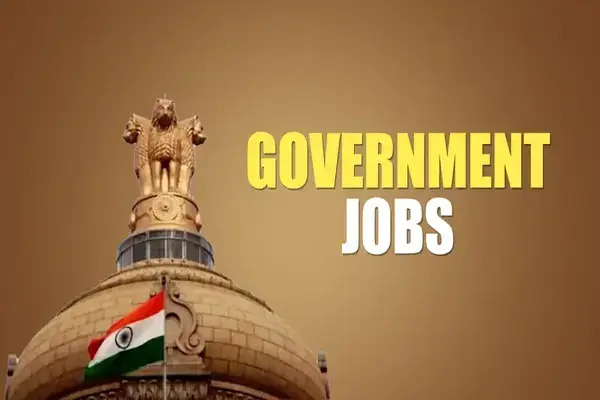Download Books, Notes and Study Material for HTET PGT COMPUTER SCIENCE 2025 for Free. Stop paying for costly materials that provide no value, Instead download our targeted study material to streamline your preparation. We hope our material may help you in your journey to crack this exam.

HTET PGT Syllabus 2025 – Overview
| Exam Conducted by | Board of School Education, Haryana |
| Type of Exam | State Level |
| Location | Haryana |
| Levels of Exam | PGT |
| Paper Languages | English/Hindi |
| Marking Scheme of HTET 1 | Mark for Every Correct Answer |
| Mode of Exam | Offline |
| Type of Test Written Paper | (Pen and Paper Based) |
| Category | Syllabus and Exam Pattern |
| Official Website | https://bseh.org.in/home |
HTET PGT Computer Science Syllabus 2025
Part-I Syllabus for Child Development and Pedagogy
A) Concept of development and its relationship with learning, Principles of the development of children, Influence of Heredity & Environment.
Socialization processes: Social world & children (Teacher,Parents,Peers).
Piaget, Kohlbergand Vygotsky:constructsandcritical perspectives. Concepts of child-centered and progressive education, Critical perspective of the construct of Intelligence, Multi-Dimensional Intelligence, Language &Thought, Gender as asocial construct;genderroles,gender-biasandeducationalpractice, Individual difference samonglearners,understanding differencesbased on diversity of language, caste, gender, community, religionetc. Distinction between Assessment for learning and assessment of learning; School-Based Assessment.
Continuous & Comprehensive Evaluation: perspective and practice. Formulating appropriate questions for assessingreadiness levels of learners; forenhancing learning and critical thinking in the classroom and for assessing learner achievement.
B) Concept of Inclusive education and understanding children with special needs:
Addressing learners from diverse backgrounds including disadvantaged and deprived.
Addressing the needs of children with learning difficulties,“impairment” etc.
Addressing the Talented, Creative, Speciallyabled Learners.
Learning and Pedagogy :
1. How children think and learn; how and why children “fail” to achieve success in school performance.
2. Basic processes of teaching and learning; children’s strategies of learning; learning as a
3. social activity;social context of learning.
4. Child as a problem solveranda“scientific investigator”
5. Alternative conceptions of learning in children,understanding children’s“errors”assignificant steps in the learning process.
6. Cognition & Emotions.
7. Motivation and learning.
8. Factor scontributing to learning-personal & environmental.
Part-II Syllabus for Language :
A) Language-I (Hindi) :
Language Comprehension Questions:
Reading unseen passage – one passage from prose/drama/poem with questions on comprehension, inference, grammar and verbal ability (Passage may be literary, scientific, narrative or discursive).
Pedagogy of Language Development:
Learning and acquisition, Principles of language Teaching, Role of listening and speaking;function of language and how child renuse it as a tool, Critical perspective on the role of grammar in learning a language for communicating ideas verb all and in written form, Challenges of teaching language in adiverse classroom;language difficulties, errors and disorders, Language Skills.
Teaching-learning materials: Textbook, multi-media materials, multi lingualre source of the classroom
Language–II(English) :
(i) Language Comprehension Questions: One unseen prose passage (discursiveor literaryor narrativeor scientific) with questionon comprehension, grammar and verbalability.
(ii) Pedagogy of Language Development: Learning and acquisition, Principles of language Teaching, Role of listening and speaking;function of language and how children use it as a tool, Critical perspective on the role of grammar in learning a language for communicating ideasverb allyandin written form; Challenges of teaching language in a diverse classroom;language difficulties, errors and disorders, Language Skills.
(iii) Teaching-learning materials: Textbook,multi-media materials,multilingual resource of the classroom.
Part-III Syllabus for General Studies :
A) Haryana GK :
1. Haryana related history
2. current affairs
3. literature
4. Geography
5. Civics
6. Environment
7. Culture
8. Art
9. Traditions, and Welfare Schemes of Haryana Government
B) General Intelligence & Reasoning:
analogies, similarities and differences, space visualization, spatial orientation, problem solving, analysis, judgment, decision making, visual memory, discrimination, observation, relationship concepts, arithmetical reasoning and figural classification, arithmetic number series, non-verbal series, coding and decoding, statement conclusion, syllogistic reasoning etc.
Thetopicsare: SemanticAnalogy,Symbolic/Number Analogy, Figural Analogy, Semantic Classification, Symbolic/Number Classification, Figural Classification, Semantic Series, Number Series, Figural Series, Problem Solving, Word Building, Coding & Decoding, Numerical Operations, Symbolic Operations, Trends, Space Orientation, Space Visualization, Venn Diagrams, Drawing inferences, Punched hole/ Pattern- folding&un-folding, Figural Pattern-folding and completion, Indexing, Address matching, Date & city matching, Classification of centre codes/roll numbers, Small & Capital letters/numbers coding, decoding and classification, Embedded Figures, Critical thinking, Emotional Intelligence, Social Intelligence.
(C) Quantitative Aptitude:
1. Numbers
2. Decimals
3. Percentage
4. Ratio & Proportion
5. Square
6. roots
7. Averages
8. Interest
9. Profit and Loss
10. Discount
11. Partnership Business
12. Mixture and Allegation
13. Time and distance
14. Time & Work
15. Basic algebraic identities of School
16. Algebra & Elementary surds
17. Graphs of Linear Equations
18. Triangle and itsvarious kinds of centers
19. Congruence and similarity of triangles
20. Circle and its chords
21. Tangents
22. Triangle
23. Quadrilaterals
24. Regular Polygons
25. Circle
26. Right Prism
27. Right Circular Cone,
28. Right Circular Cylinder
29. Sphere
30. Hemispheres
31. Rectangular Parallelepiped
32. Regular Right Pyramid with triangular or square base
32. Trigonometric ratio
33. Degree and Radian Measures
34. Standard Identities
35. Comple mentaryangles
36. Heights and Distances
37. Histogram
38. Frequency polygon
39. Bar diagram & Pie chart.
Computer Science :
HTET PGT Computer Science Exam Pattern 2025
For PGT Exam Pattern
Duration : 150 Minutes
| S.No | Subject | No.of Question | Marks |
| 1. | Child Development & Pedagogy | 30 | 30 |
| 2. | Language – Hindi | 15 | 15 |
| 3. | Language – English | 15 | 15 |
| 4. | Quantitative Aptitude | 10 | 10 |
| 5. | Reasoning | 10 | 10 |
| 6. | Haryana GK | 10 | 10 |
| 7. | Computer Science | 60 | 60 |
| Total | 150 | 150 |